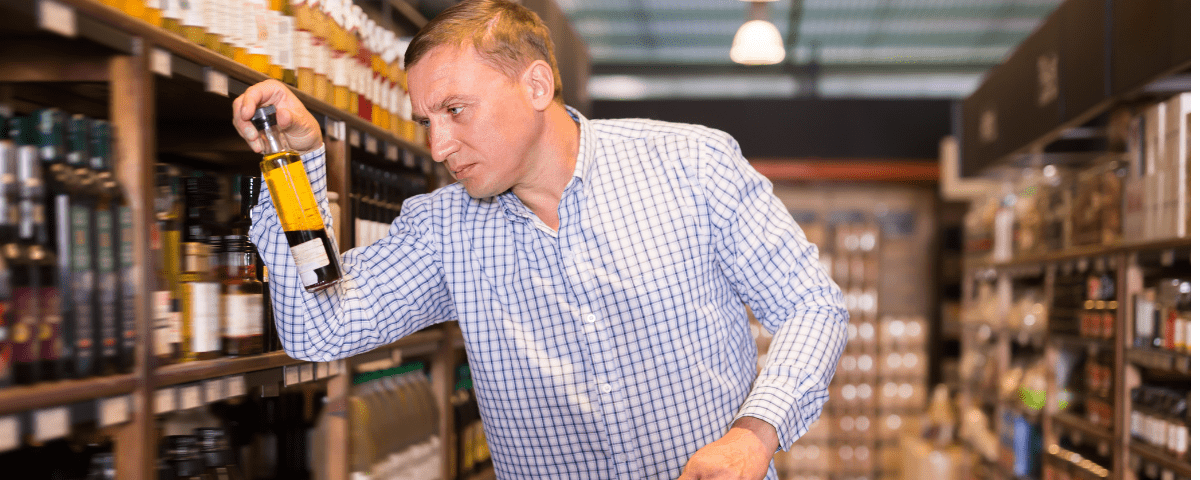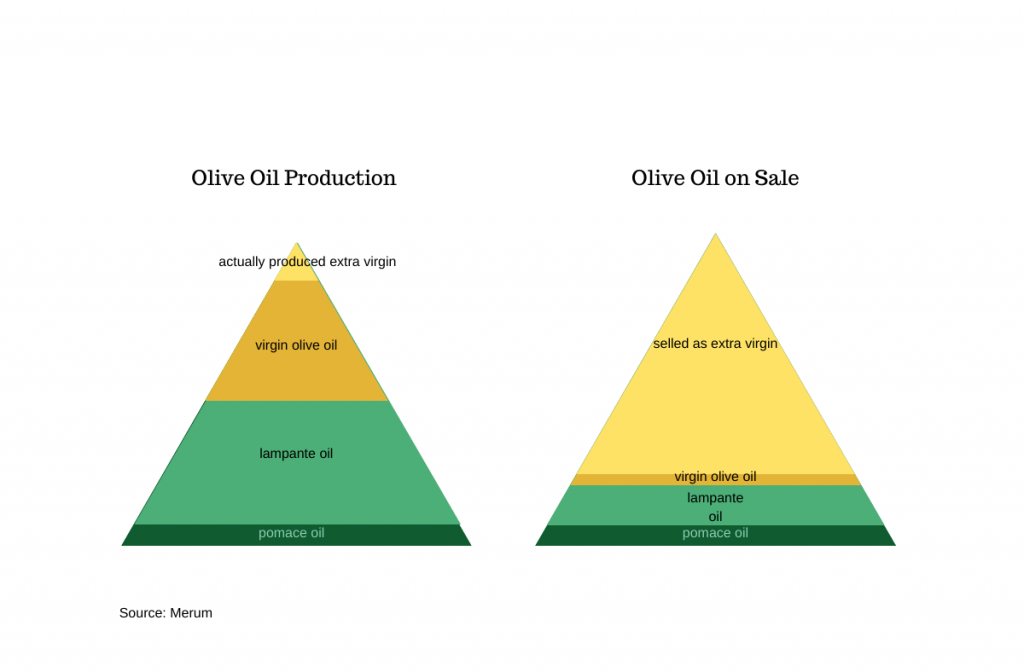Did you know that olive oil is the most fraudulent food ever? The production of olive oil is a highly competitive and sometimes criminal business. It is adulterated, mixed and deceived wherever possible. One olive oil scandal follows another. And right in the middle of it all, the consumer who on the one hand wants to gain from the health benefits of wonderful product, but on the other hand is becoming more and more insecure. So how can you as a consumer recognize a really good EVOO?
Olive oil testing
After a test of 20 olive oils of the highest quality class, the magazine “Öko-Test” (issue 5/2019)in Germany, came to the sobering result: In terms of taste and smell, only one olive oil is “very good”, seven are “good”. And four are even “poor” in terms of sensory properties and, in the opinion of the testers, should not actually be called “extra virgin”. Three of the four label fraudsters are organic products. The testers found mineral oil in 10 out of 20 oils, including MOAH (aromatic mineral oil hydrocarbons), which, according to the Federal Institute for Risk Assessment in Germany(BfR), has no place in food. In addition, there are also other mineral oils and other pollutants such as plasticizers. All in all, a sobering result. But how can it be that these oils can be sold as extra virgin olive oils all over Europe?
The quality pyramid
This pyramid shows the extent to which fraudulent labeling is carried out with olive oil. Only a small proportion of the world’s production is produced as extra virgin, but the percentage of the highest quality extra virgin available is over 90%. Where does all this extra virgin olive oil come from if it is not produced at all? Quite simply, lampante oil becomes extra virgin on the way to the consumer, but not only that, sometimes you can find olive oils mixed with hazelnut or rapeseed oil or even sunflower oil simply colored with chlorophyll.
Lampante oil is a bad-smelling and unpleasant-tasting oil that is made from spoiled, rotten or fermented olives. This lowest category should actually not be sold for direct consumption at all. The law stipulates that lampante oil can only reach supermarkets as simple “olive oil” after a chemical refining process and after it has been blended with a small amount of virgin olive oil.
How to recognize a good olive oil?
Unfortunately, it is not easy for the layperson to recognize a good olive oil. The first clue is of course the label. It should contain a clear indication of origin and filling. Information such as: “From Italy” or “Spanish olive oil” does not mean that in question it comes from Italy or Greece, but that it was only bottled there. But sometimes it’s an Italian label from a Spanish company, the content maybe a mixture of Moroccan and Turkish olive oil. So watch out, the more information the better. Ideally, the exact area of origin, the bottling location, the year of harvest and the producer should be specified. A P.D.O. Product (protected designation of origin) has the advantage that all steps, from manufacture to processing and manufacture of a product, must take place in a specific geographical area. But unfortunately there are often frauds and fakes.
On the other hand, many consumers do not even know how an extra virgin olive oil should taste at all. A good oil tastes strong and fresh. It is also a bit bitter and often has a sharpness on the palate. There is even something scratchy in the throat – that is a sign of quality. Incidentally, the color is not an indication of quality. And even a cloudy oil is not necessarily a better one. It usually goes rancid faster because it’s not filtered. A real, EVOO can and must have exactly 3 properties.
- fruity
- bitter
- sharp
The fruitiness of an oil can of course vary, because there are mild and intense olive varieties. The bitterness and spiciness are sometimes more intense or milder. But a real EVOO must have these 3 properties. It’s best to rely on your palate. You should like the olive oil of your choice! Rely on your taste buds and try different oils on each occasion. You will be amazed at the enormous differences in aroma and quality, even for a layperson! Many will say, ok, everything is well and good, but olive oil cannot be tasted everywhere! That is of course correct, so you should also think about where to buy your olive oil.
Olive oil is a matter of trust
The variety of olive oils is more abundant today than ever before. Nevertheless, the search for real extra virgin olive oils remains a difficult matter for consumers. Because the majority of the oils produced and offered is still of poor quality. The risk of choosing the wrong bottle is correspondingly high. With an olive oil, a producer should always be behind it and not just any large bottling company. Prefer small shops that import their own olive oil and often also know the olive grower themselves. They usually also offer tastings on site, where you can try the olive oil of your choice.


